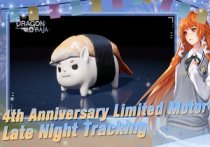Orcs Must Die! Unchained – An Alpha Hands-On

Earlier this week we had the opportunity to play a development build of the upcoming Orcs Must Die! Unchained.
Orcs Must Die! Unchained is an upcoming Free-To-Play online game and the latest installment of the popular Orcs Must Die! series. Unlike its predecessors, Unchained has a complete focus on team-based multiplayer action.
Though details on the backstory are sparse at this point in time, Unchained is set after the events of Orcs Must Die! 2 where the Unchained faction’s arrival has become a reality and rifts are stating to open up across the land.
Unchained is a frontrunner in the evolution of the third person tower defense genre; other games in the genre, including the previous Orcs Must Die! games, have successfully implemented co-op, lanes, and interesting tower mechanics, but Unchained is the first to really bring the third person tower defense genre into the competitive multiplayer arena.
In Unchained, two opposing teams of player-controlled heroes, their towers (traps), and their minions are pitted against each other in semi-closed lane and spawnwave driven maps. In our hands-on time with the game we played two typical 5v5 matches and a single 4v4 custom game.
Games start with a lobby screen where players can choose a hero to play as and can select a predefined deck of items, traps, and minion cards to play with as the game progresses. Heroes are limited to one of each per team, and there are 13 heroes to choose from currently. All heroes have a unique primary, secondary, ‘Q’, ‘E’, and passive ability that define how they are played – melee, ranged, or support, respectively. Decks of cards define the traps that you can set on the field, the minions you can set to automatically spawn from points on the map, and the items your hero will have equipped for the duration of the match. We’ll touch on deck building later on in this article.
At the start of a game players spawn on their side of the map next to their Rift – the Rift being the most important point to defend or attack. Each team – Red and Blue – want to get their minions into the opposing Rift by pushing through enemy traps and heroes. Rift health is tracked at the top of the screen for both teams, starting at 20 – be warned that different minions do different amounts of damage to a Rift.
As soon as a game starts players can freely place traps on their side of the map with their starting trap points. Trap points are earned over time by dealing damage to enemy minions and heroes or by collecting chests that appear on a hero’s death. Trap selection, mechanics, placement, and costs work similarly to the previous Orcs Must Die! titles – pick a trap using the number keys, rotate the trap appropriately, rotate your camera to face a placement area, and click to build.
In addition to starting trap points, players start with some upgrade points which can be spent in upgrading minion spawn points or in upgrading their heroes’ resistance to various types of attacks – arcane, frost, fire, lightning, or physical.
In the map we played there were three minion spawn points on each side, and two of them were locked at the start. To unlock or upgrade minion spawn points, players must invest upgrade points in 1000-point increments until a specified threshold is reached, up to level 4. In each minion spawn point each player can play a card from their selected deck to set what spawns on their behalf, and as spawn points are upgraded higher tiers of cards can be played and the spawn wave grows in size. Like trap points, upgrade points are earned over time and by dealing damage to the enemy team.
The minion wave-spawning mechanic in Unchained is different than in other games – the minions don’t clash or fight each other directly, at least on the map we played. In the games we played, our offensive center lane and the opposing offensive center lanes were different; players and traps could attack/defend opposing forces in each center lane, but the minions followed different center lane paths into the opposing base.
The game itself progresses by players running with their minions into the opposing base, through traps and players, and into the opposing Rift while simultaneously defending their own base. Lanes are generally narrow and have corners and choke points which favor trap placement, but when they open up minions become more favored because they’ll aggro onto targets en masse or run along a wide enough path such that heroes and traps can’t hit them or slow them all effectively.
Unchained has multiple maps – though we only got to play a three lane castle map, there’s a map with two lanes and there will be more to come. We’re honestly glad to know that map variation and choice will be a shipping feature.
Gameplay in Unchained can be quite hectic, with very little predetermined downtime since players can ambush or push on their own without minions. We can imagine circumstances where both teams entrench themselves and play defensively to build up their minions and hero upgrades, but the gameplay we experienced was very active between pushing with spawn waves, building traps, and upgrading minion spawners. Games are designed to last 15-20 minutes, but depending on how evenly matched the teams are it’s possible for games to go longer. In our three games we went to 25 minutes twice, and 20 minutes once.
We noticed that traps seem to take a backseat during a majority of the early game because fighting other players is much more interesting and entertaining than trap placement and damage calculation, but trap placement and the damage they deal out grow increasingly more important as the game progresses to the point where minions start getting beefier and reach higher tiers of combat effectiveness.
The game feel in Unchained is a little slow, purposeful, and a bit weighty. A dodge mechanic is lacking by design, out of combat healing is slow if you’re not near your teams Rift, respawn timers are long, and no one hero seems very meaty – even the supposedly tanky Hogarth. Heroes by themselves seem pretty weak, often unable to solo a level 3 minion. We strongly advise against hero diving in Unchained, at least for now, as the meatiest characters have a really hard time doing anything significant while separated from their friendly minion wave. Again, if you’re experienced with the previous Orcs Must Die! titles then this will be pretty familiar.
Unchained’s mechanics open up some gameplay options that run deep into metagame territory very rapidly, such as the option to save up upgrade points and rush a new minion spawner from locked to level 2 only a few seconds before the next wave, taking damage types and trap formations into account, and the hiding of trap and players behind corners. We can see Unchained being played at a high level shorty after public release, and we expect that additions to the game’s card, hero, and boosters will enhance open up even more options for players to metagame.
Progression in Unchained is handled on an account basis as opposed to a hero basis. All accounts with start with the same set of five heroes (Ivy, Hogarth, Blackpaw, Sorceress, War Mage) and the same basic trap cards. As a player you collect cards that represent different heroes, trap, and minions and these cards fill up a collection. With your collection of cards you can build decks to use in matches. After each match experience points and skulls are awarded to each participant; the experience levels up player accounts, and the skulls are used to buy card packs or individual cards. At each level up, the size of your deck can expand, the amounts of decks you can have can expand, and you receive rewards such as card packs, boosters, and skulls to use. With each expansion of your card deck, which acts as a pseudo tutorial to wean players into the game, you have added in-game flexibility with the amount or types of cards you can select.
Deck customization is quite straightforward – it’s essentially a loadout selection method. Early on, when your account is low level, your deck size will be pretty small – only allowing for a few of different trap and room for 1 or 2 of each tier of minion. As your account levels up and you collect cards you can add additional traps, minions, and eventually gear for your hero, weavers, and glyphs. Though no “recommended” deck builds are planned for the game it’s highly probable that the community will post guides online that work for each hero. Players are allowed to have duplicate trap cards in their deck, but there is a 20 trap limit to how many traps a player can have active in a given game. Players can dench duplicate cards for “meat gibs” – a 3rd type of in-game currency – and turn them into cards they want.
(Prices subject to change)
Monetization in Unchained is similar to that of other games with card collection systems: Use a combination of real and/or in-game currency to purchase certain cards, card packs, and in-game resource boosters as well as cosmetic skins and vanity items. Following the typical Free-To-Play model, anyone can collect everything in the game free of charge, but using real money will make this process a bit faster.
On the technical side of things, Unchained uses the Unreal 3 engine, which will run on most any modern system these days and will play great on any mid-line gaming rig. Recommended system requirements are below (for 1920×1200, Mid-High settings):
- -Windows 7/8 64-bit.
- -Intel Core i5-2320 3.0ghz (or better)
- -6GB of RAM (or more)
- -10GB of hard drive space
- -Nvidia GeForce 555GTX / 1GB of VRAM (or better)
In its bare essence, Orcs Must Die! Unchained can be summed up as two simultaneous games of Orcs Must Die! 2 feeding into one another, with players moving between each game freely as enemy heroes enemies or allies – it’s fun!
If you enjoyed the previous Orcs Must Die! games and you’re looking for a multiplayer versus spin on it then we recommend you sign up for the closed beta, which starts today: https://www.orcsmustdie.com/
Articles You May Enjoy
- PAX East 2015 Day 1 Recap - Trion Worlds, Dreadnought, Indie Games, and Cosplay!
- A full day of intense news coverage followed by a night of even more intense drinking and hobnobbing (and still surprisingly, news coverage!)...
- Tribal Wars Hits iPad
- Strategy classic Tribal Wars rolls out onto mobile devices.
- Naughty or Nice? Find Out, MicroVolt Players!
- Rock Hippo Productions has announced MicroVolts' newest update - Naughty & Nice.

















